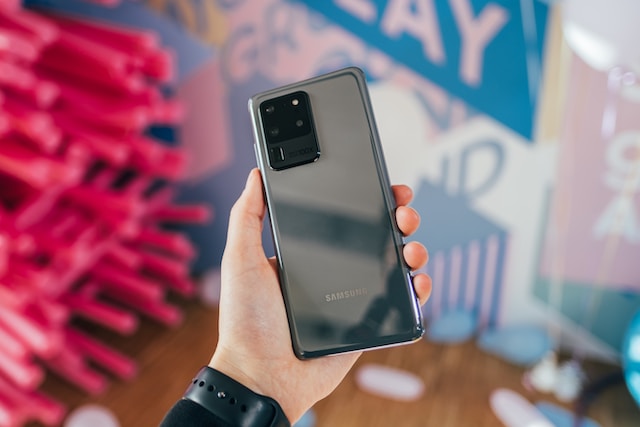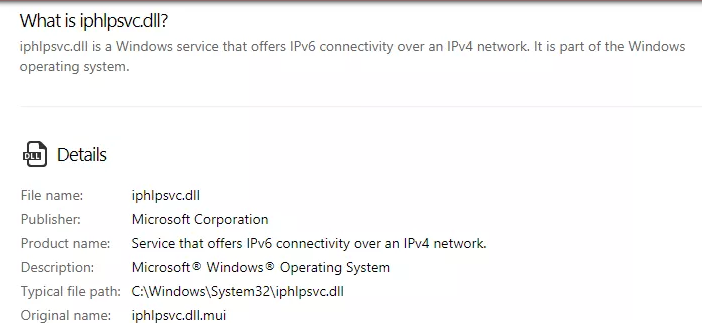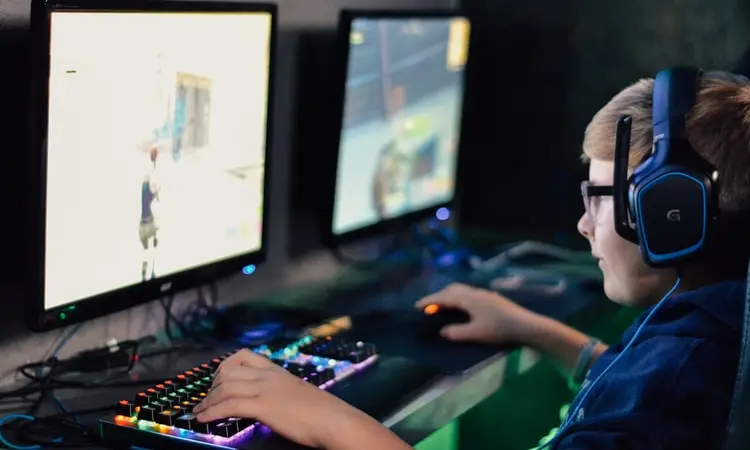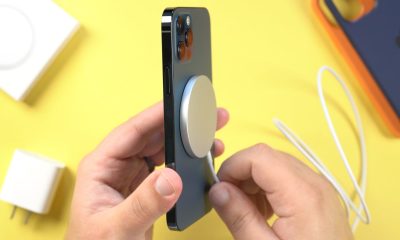NEWS
After the developer of Amphetamine complained to Apple about the software being removed because of its name, the company ultimately decided to allow the Mac app have its present name and logo (William C. Gustafson / GitHub)

Amphetamine is a free application for the Mac that allows the user to configure how long the computer will remain awake. The 2014 release has been well received by users, with over 432,000 downloads and five-star ratings on the Mac App Store. MacRumors has previously highlighted the app as well. Amphetamine has been available on the Mac App Store for six years before Apple unexpectedly removed it for not following their rules.
After a representative from Apple contacted Amphetamine’s developer, William Gustafson, to inform him that the software will be withdrawn from the Mac App Store on January 12, 2021 if several adjustments were not made, Gustafson posted a lengthy report on GitHub describing the situation. The agent stated that the following condition was not met by Amphetamine:
Tobacco and e-cigarette, illegal drug, and excessive alcohol consumption-promoting apps are not allowed in the App Store. Any app that targets kids or encourages them to use illegal drugs or alcohol will be removed. Tobacco, marijuana, and other controlled substances cannot be sold, and neither can they be facilitated for sale outside of legal pharmacies. According to reports, the Apple official stated “It seems like your software encourages people to take drugs in the wrong way. In particular, your app’s name and image both make allusions to illegal drugs and medicines.” As amphetamine is available only with a doctor’s prescription in the United States, Gustafson said, it doesn’t encourage drug abuse. He added that the film does not advocate for the “irresponsible, illegal, or recreational” use of amphetamine.
Amphetamine (the app) can be used in the same way as amphetamine (the chemical molecule) can be used to keep humans awake and focused.
To counter the claim against the app, Gustafson filed an appeal and started a petition on Change.org, which has since received over 500 signatories. And just now, he tweeted that he had just gotten off the phone with the App Review Board and that Amphetamine would still be available in the Mac App Store. It’s surprising that Apple forced Amphetamine to change its name after they highlighted it in a Mac App Store Story and the software received 1,400 reviews on the Mac App Store. Gustafson also claims to have had numerous conversations with Apple’s App Review Team on Amphetamine, but this issue has never come up before; the cause of this is a mystery.
NEWS
woodgrain my tools

Are you looking for information on woodgrain my tools? You have come to the right place! In this blog post, we will provide a step-by-step guide on woodgrain my tools
Woodgrain Login
Power Tools – Woodgrain
www.mytoolswoodgrain.com/
Mytools Woodgrain Login – MetaBenefit
woodgrain mytools – WOW.com – Content Results
Mytools woodgrain
Woodgrain Tool – Available At Blue Star Antiques
Mytools woodgrain com
Mytools woodgrain millwork
Mytools Woodgrain
Mytools woodgrain
Woodgrain Tool – Available At Blue Star Antiques
How To Use A Wood Grain Tool: It’s So Easy – Chas’ Crazy Creations
Wood Grain Rocker Tool – Heirloom Traditions Paint
Wood Grain Tool, 5Pcs Wood Grain Roller Soft Rubber Wood …
NEWS
Rajkotupdates.News : Work Permits for Indian Spouses of H-1B Visa Holders Approved by the U.S.!

Indian H-1B visa holders’ spouses, take note! Newly released information is exciting: the United States has issued work permits to eligible individuals, allowing them to pursue their professional goals and contribute to the economy.This is a monumental shift that has the potential to profoundly affect the lives of tens of thousands of people across the country. Prepare yourself for the most recent rajkotupdates.news report!
What Exactly Are Work Permits?
- Spouses of U.S. citizens from outside the U.S. who are sponsored by their sponsors and who meet other criteria can apply for work visas.
- Spouses from outside the United States can get work permits to lawfully work in America. Furthermore, they are permitted to remain for longer than visitors who are not immigrants.
- US Citizenship and Immigration Services (USCIS) documentation and an interview may be required to secure a work visa, but the process is otherwise simple.
- After you obtain your work permit, you must provide it when you apply for a visa or request entry to the United States.
To Whom Do Work Permits Apply?
If your spouse is in the United States on an H-1B visa and you are an Indian citizen, you may be eligible for a work permit.
The following conditions must be met before you can apply:
- You and your American spouse must be more than just dating.
- Your U.S. companion must hold a current H-1B visa.
- You can’t get married if you cheated or lied about anything.
- You and your future spouse in the United States must have met beforehand.
- You need to prove that no American citizen or permanent resident is qualified for the position you’re applying for.
Your fourth step is to visit the U.S. Department of State’s Bureau of Citizenship and Immigration Services (BCIS) to apply for a work visa. Be sure to include all of the required paperwork with your application because the review process can take many months.
What Do You Need to Do to Get a Work Permit?
If you are Indian and married to a U.S. citizen, you might be eligible for a work visa.
- You must be financially stable in order to qualify for an H-1B visa.
- Have a representative of your own country’s government witness your wedding.
- Carry a valid passport. If you meet all of these requirements, then you can submit your application to USCIS. Your partner’s full name and U.S. address are required pieces of information.
- You’ll also need to present documentation that you have the means to support yourself financially and that you’re legally able to receive a work visa, such as a marriage licence. You may be eligible to file an appeal if you are denied a work visa.
How Do You Apply for a Work Visa?
The process of obtaining a work visa varies from country to country. In most cases, you’ll need to demonstrate that you’re capable of supporting yourself and your partner.
It’s possible that you’ll also need to provide evidence of your relationship status and health insurance coverage. In some countries, you need a visa before you can apply for a work permit.
After obtaining a work visa, what steps should one take?
- Submit an application for a change of status with the Department of Homeland Security (DHS) after obtaining a work permit.
- To begin the Adjustment of Status procedure, you must provide evidence of your marriage and establish that you otherwise qualify.
- If your status adjustment is approved, your spouse will be entitled to apply for an immigrant visa and join you in the United States.
Conclusion
Spouses of Indian citizens holding H-1B visas are now eligible to apply for work authorization in the United States. More qualified Indian workers may find employment in the United States as a result of this. The work permits would be valid for up to six years, allowing Indian nationals to compete for jobs that would normally be out of reach due to a lack of education, training, or experience. This is part of President Trump’s strategy to reduce the need for foreign labour and halt the influx of illegal immigration.
MOBILE APPS
Dialog Semiconductor Expands Samsung Galaxy Fit’s Connectivity with Bluetooth® Low Energy

The new Samsung Galaxy Fit features Dialog’s DA14697 for improved connection and longer battery life, making it one of the first wearable devices on the market to do so.
The latest Galaxy Fit features Dialog’s wireless microcontroller unit (MCU), according to a press release from Dialog Semiconductor plc (XETRA: DLG) of London, United Kingdom. Dialog specializes in highly integrated power management, AC/DC power conversion, charging, and Bluetooth® low energy technology. The Galaxy Fit is a sleek and stylish fitness tracker with advanced tracking functions that help users stay on track with their health and wellness objectives. In addition to monitoring a wide variety of activities, it also provides advanced tools for analyzing sleep and dealing with stress.
For the Galaxy Fit band to be useful, it had to be able to sync with users’ smartphones so they could receive notifications while they were on the go. The item needed a solution that would provide smooth smartphone connectivity while conserving energy to extend battery life, and it needed to be easy to style and pleasant to wear all week long. The DA14697, a wireless microcontroller unit from Dialog’s DA1469x SmartBondTM series, was the answer for Samsung.
Samsung’s Galaxy Fit is a great example of what consumers want from the next generation of fitness trackers, according to Sean McGrath, SVP and GM of Dialog Semiconductor’s Connectivity and Audio Business Group. Together, Dialog and Samsung have established a new standard for low-power Bluetooth connectivity and best-in-class power consumption, paving the way for a new era of connected life. The DA1469x series is the most advanced, feature-rich variety of MCUs for wireless communication, and they are the newest addition to Dialog’s SmartBond line. Higher-end fitness trackers and other wearable devices can take advantage of the increased processing power, resources, range, and battery life it provides for developers.
The family is also the first in production to use an ARM Cortex-M33-based dedicated application processor in a Bluetooth wireless microcontroller SoC. The devices have a Sensor Node Controller (SNC) that operates independently to wake the application processor only when necessary, and a cutting-edge Power Management Unit (PMU) that activates the various processing cores as needed to conserve power.
-

 Marketing1 year ago
Marketing1 year agoHow Often Should You Publish on a Blog?
-

 Technology1 year ago
Technology1 year agoIPHLPSVC Services Tuning? Windows 7/10
-

 Technology1 year ago
Technology1 year agoHow AI Can Transform Healthcare
-

 REVIEWS1 year ago
REVIEWS1 year agoBest Gaming Communities Like F95zone
-

 OUTDOOR1 year ago
OUTDOOR1 year agoColoring Black and White Photo at Home
-

 Technology1 year ago
Technology1 year ago5 Best React JS UI Frameworks for Swift Prototyping
-

 REVIEWS1 year ago
REVIEWS1 year agoAll You Need to Know About KissAnime – Is it Safe and Legal?
-

 GAMING1 year ago
GAMING1 year agoPick N Mix: A Slots Adventure for Everyone




